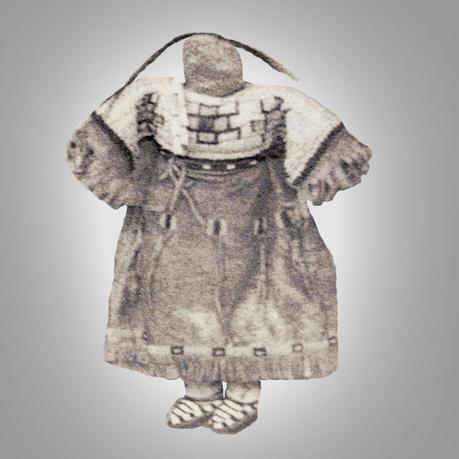For several decades archaeologists have been debating the meaning of female-form figurines from the Paleolithic. In a now classic paper (pdf) Sarah Nelson surveyed the various meanings that had been attributed to these “Venus” figurines by mostly male archaeologists, and unsurprisingly found them lacking. She noted that an archaeological mythology had sprung up around these highly diverse forms, and that the sexualized construction of them as “fertility fetishes” or “mother goddesses” was not particularly insightful. These figurines are in fact enormously diverse, not only in form but also in time and space. In Female Figurines of the Upper Paleolithic (pdf), Karen Jennett catalogued all this diversity and concluded that we may never know their various and polysemic meanings.
Given all this variation, inscrutability, and perhaps insolubility, I was surprised to see Science’s Michael Balter reporting on yet another attribution of meaning, this one coming from a presentation given last week at The European Paleolithic Conference. In what can only be characterized as confirmation of the obvious, the presenters argued that the early figurines “represent the overall idea of femaleness.” In addition to this bombshell, the presenters noted that the figurines present “female nakedness in all its splendor.” For the sake of charity, I am going to assume they said more and that something (new, important, or provocative) has been lost in Balter’s summary translation of the proceedings.
All attributions of meaning to these figurines face the same difficulties, the first of which is that the people who produced these were animists whose worldviews were profoundly different than our own. Ascribing meanings to these objects should begin with this consideration. If we did this, we would straightaway realize that even classing them as “objects” is problematic. Judging the issue by ethnographically known animists, it seems likely that these figurines were infused with life, force, or power. They were not simply inert or material objects.
The second problem arises from our ethnohistoric awareness that figurines which appear similar and somewhat uniform to us can carry vastly different, and divergent, meanings for the people who make and possess them. The classic example of this comes from the Great Plains tribes, many of whom created and curated anthropomorphic rock figurines. Despite their outwardly apparent similarities in form, these figurines carried different meanings for tribes that lived in close proximity with one another. Consider these:


Figurines similar to these could be found all over the Great Plains and bordering areas. Some were simply children’s play things or dolls. Others were thought to be powerful anthropomorphs and were kept in medicine bundles. Still others were sacred tribal objects and subject of collective ritual such as the Kiowa Sun Dance or Kado, which was centered on a stone figurine known as T’aime. In this 1911 article (open), Hugh Lennox Scott describes it:
The principal element in the Kado is the Taimay which is an image brought originally to the Kiowa from the Crows by an old Arapaho, and all the keepers of the Taimay have since been of the blood of that old Arapaho.
The Taimay is in the likeness of a small person, or doll, without legs. Its head is a small round stone covered with deerskin painted to resemble a person. It wears a shell gorget and has an eagle feather on its head: its body is made of deerskin and has short eagle body feathers hanging down all over it.
When used in the dance, the body is tied to a staff about six feet long, stuck in the ground, in front of a cedar screen, which is opposite the main door, in the rear of what corresponds to the altar place, though there is no altar. This cedar screen makes a retiring place for the participants in the dance.
When not in use the image is kept rolled in various wrappings in a parfleche with a moon painted on it. The first wrapping is a white polecat’s skin that was captured from the Pawnee about forty-nine years ago; the second is the skin of an antelope; the third is of calico. This whole bundle is then put into the parfleche.
If we didn’t have this description from informant and observer based ethnohistory, what kind of meaning might we ascribe to this “doll” if found in an archaeological context? We almost certainly would not be able to guess its meaning or significance to the Kiowa, or to the Arapaho or Crow before them. We face similar kinds of difficulties with Paleolithic female figurines. At some point, we simply need to realize that these meanings will probably never be recovered.

